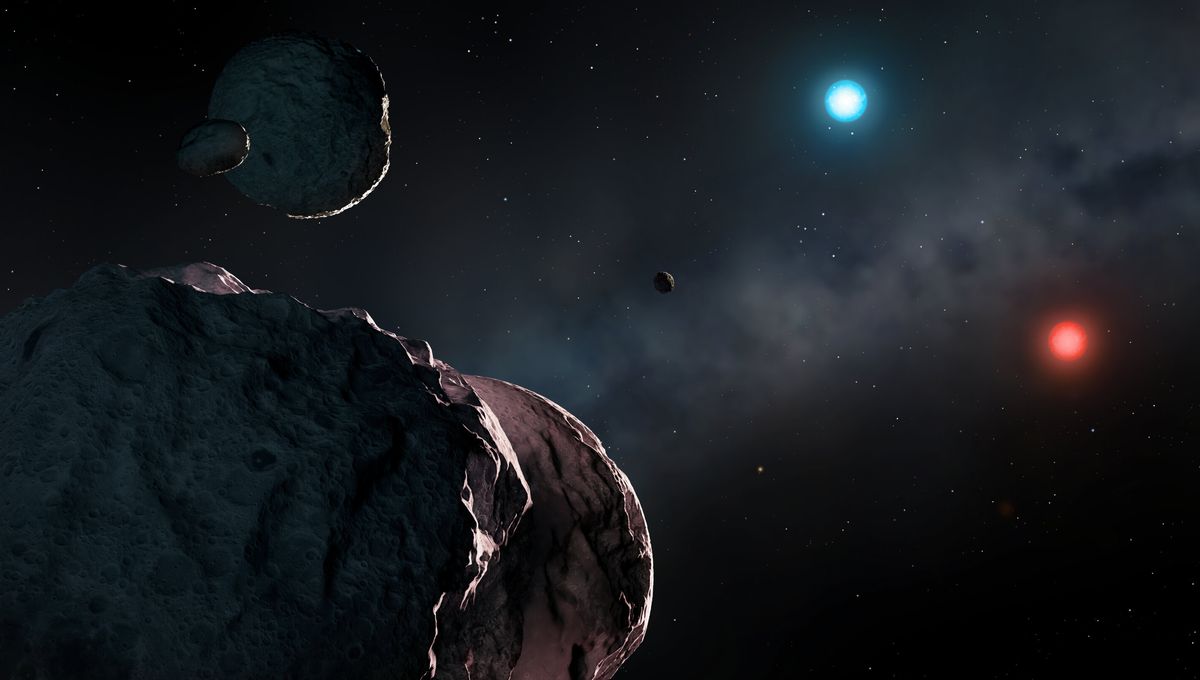
Astronomers have identified the oldest remains of planets in the Milky Way. And, they are relatively nearby, just 90 light-years from Earth. Researchers used observations of white dwarfs to identify those “polluted” by chunks of planets and other debris, and found one that has existed for an estimated 10.7 billion years. That’s over twice the age of our own Earth.
A white dwarf is a late stage in the evolution of stars like our Sun. Once they can no longer fuse hydrogen, stars contract and ignite helium, forcing them to expand into a red giant star. Over time, such stars lose their loosely bound outer layers, and if they are not massive enough to go on to become a supernova, their cores contract into white dwarfs.
Planets that used to orbit the original star, before these dramatic transformations, are often broken apart. This planetary debris can then fall onto the white dwarf, changing its chemistry in a way that astronomers can measure.
“We’re finding the oldest stellar remnants in the Milky Way that are polluted by once Earth-like planets. It’s amazing to think that this happened on the scale of 10 billion years, and that those planets died way before the Earth was even formed,” lead author Abbigail Elms, a graduate researcher at the University of Warwick, said in a statement.
The team identified the “red” white dwarf WDJ2147-4035, estimated to be 10.7 billion years old, which has spent 10.2 billion years as a white dwarf. Among the heavy elements present on this star were sodium, lithium and potassium, as well as potential carbon. The object is indeed puzzling, and not just because it’s polluted.
“The red star WDJ2147-4035 is a mystery as the accreted planetary debris are very lithium and potassium rich and unlike anything known in our own solar system. This is a very interesting white dwarf as its ultra-cool surface temperature, the metals polluting it, its old age, and the fact that it is magnetic, makes it extremely rare,” Elms continued.
The team also identified a second polluted white dwarf, the “blue” star WDJ1922+0233. Both stars are the coldest polluted white dwarfs to date. The composition of the planetary debris from this second object is a lot more in line with the continental crust of the Earth. The white dwarf appears blue because of a peculiar mixture of helium and hydrogen in its atmosphere.
“When these old stars formed more than 10 billion years ago, the universe was less metal-rich than it is now, since metals are formed in evolved stars and gigantic stellar explosions. The two observed white dwarfs provide an exciting window into planetary formation in a metal poor and gas-rich environment that was different to the conditions when the solar system was formed,” added senior author Professor Pier-Emmanuel Tremblay, also at the University of Warwick.
More evidence of ancient planets, similar in composition to the Earth, makes us wonder how likely it is that life could have evolved on those worlds. In the particular case of WDJ2147-4035, it seems that things moved too quickly from star to white dwarf, but maybe there are other worlds out there that have survived (and if there are, where is everyone?).
The study was published in Monthly Notices of the Royal Astronomical Society.
Source Link: Oldest Remains Of Planets In Milky Way Discovered, And They're Nearby